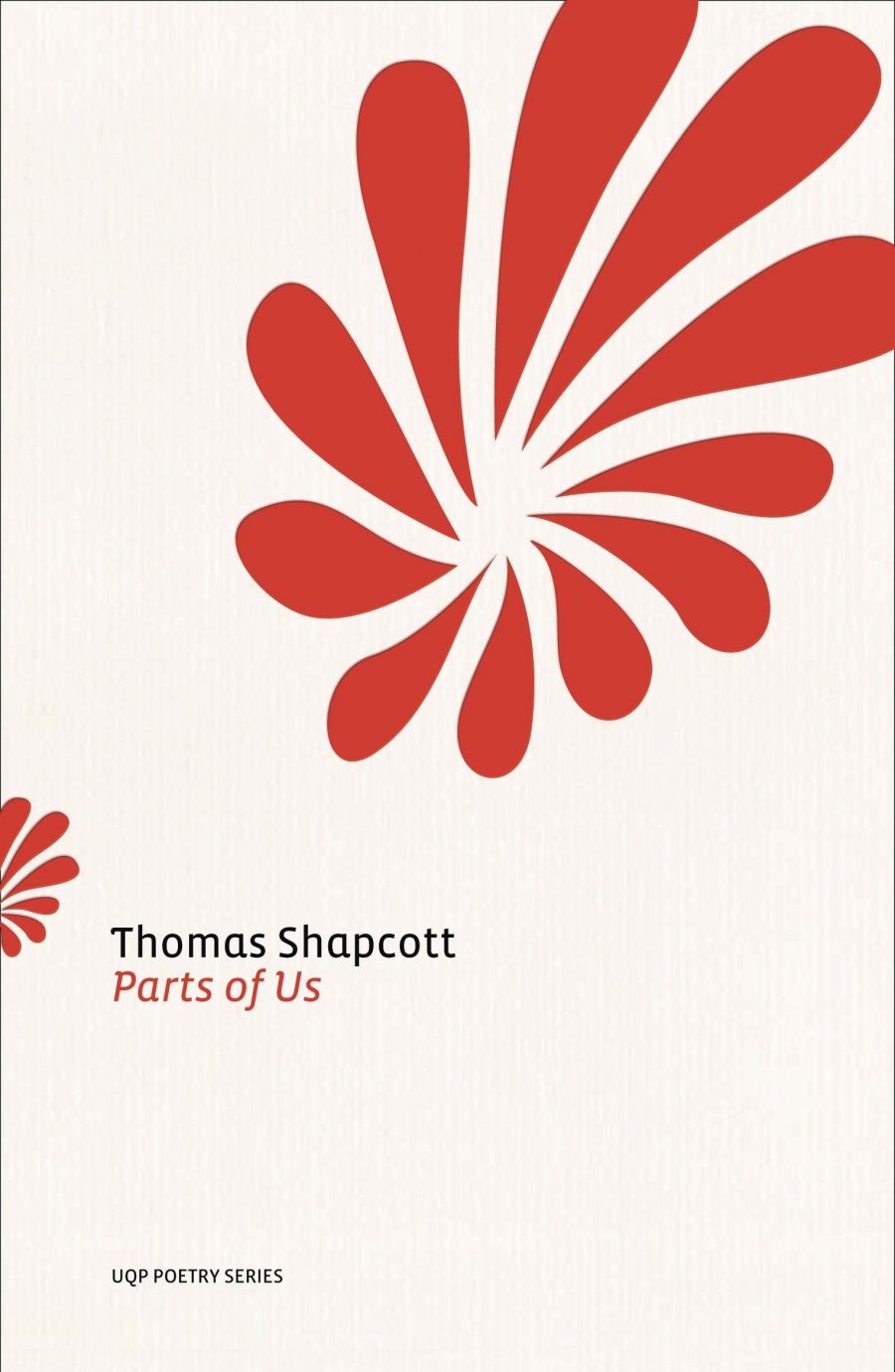
- Free Article: No
- Contents Category: Poetry
- Review Article: Yes
- Online Only: No
- Custom Highlight Text:
This is Tom Shapcott’s thirteenth individual collection of poetry (two Selected Poems have appeared, in 1978 and 1989) in a writing life that – at least for his readers – began with the publication of Time on Fire in 1961. It continues something of a late poetic flowering, which, to my critical mind, began with The City of Home in 1995. All in all, Parts of Us is no disgrace to its twelve predecessors.
- Book 1 Title: Parts of Us
- Book 1 Biblio: University of Queensland Press, $24.95 pb, 124 pp
The body declines too, of course, and it is inevitable that there should be poems recording this. Shapcott does this mode better than most, partly because he is always looking at the borders of the self and the connections it makes. Apart from general decrepitude – tottering to put out the garbage, for example, or acknowledging on a trip to Pine Lake (which recalls a Canadian trip into the subarctic in which he had seen the blackened stumps of trees burnt in 1928) that ‘regeneration is no longer an option’ – there is the specific blight of being robbed of the power to articulate easily, a cruel fate for a literary intellectual. There is a fine poem, all the more moving for its lightness of touch, in which Shapcott compares himself with his granddaughter, who is ‘tumbling towards speech’:
my own tongue thickens and the muscles distort
language so that I hesitate to express myself and cannot
control articulation. Silence rather than speech
is my new mode. Miranda laughs up at me
and says my name with perfect symmetry.
Parts of Us also takes the liberties that aged poets are allowed. The vulgarism ‘but, hey!’ as in ‘but, hey, / the age of plastics has probably just begun’ appears twice (has it ever previously appeared in a reputable poem?), and there is a fine poem about farting as an expression of the music of the body.
At the social level, the most powerful response is to human meanness and littleness. It emerges most clearly in an allegory about the former prime minister and his government’s policies on asylum seekers, ‘Parable of the Second Stone’. Perhaps a more interesting poem – more interesting because its analysis seems more radical – is ‘Monteverdi at 74’, one of a group of poems in the book’s first section that are devoted to composers. It is no accident of course that Shapcott has chosen an age for Monteverdi that is (at least roughly) his own at the time of writing, though it must have been Monteverdi’s age at the time of composing ‘The Coronation of Poppea’.
The point of the poem is stated in the first stanza: ‘Nero is never a stranger: / he is one of us.’ It goes on to detail the way in which feeling – the ever-present human response that, as a later poem ‘Autobiography’ says, postmodernism tried unsuccessfully to discount – is always capable of generating corruption and hypocrisy. ‘Corruption,’ it says ‘is not so much / an absence of restraint / as a surplus of feeling’s insatiability.’
Another feature of recent poetry by Shapcott is his fascination with genetic inheritance; there are a number of poems built around this. Intriguingly, these poems are often written in tight and constricting forms, such as the ‘Petrarchan’ version of the sonnet. It is as though the forms mimicked, in some way, the inescapable labyrinth of genetic history: the book’s second section, in which many of these occur, is called ‘Bound to It All’. Whether this topic belongs to the dark or the light is a moot point, but it certainly attacks the notion of the self as a contained, unique phenomenon. In the Shapcott universe, neither living nor dying is an experience of solitude.
The light, on the other hand, has many incarnations: little granddaughters being one of them, but also memory and taste, and the associative connections between them. The book’s third section (placed, presumably, like the minuet or scherzo of a classical symphony) is a set of sonnets devoted to eating out for lunch in Adelaide. Never a boulevardier myself, I have to say that this section, with its glazed duck, oysters, Moreton Bay Bugs and fine wines, irritated me enormously on first reading. But seen in context, it makes a lot of sense. Our social selves are a crucial part of the light, and in all cultures the social self seems to be associated with eating. So I can see that its author wanted this section to be a celebration of the first city in Australia to move towards a warm, more Mediterranean, experience of collaborative eating.


Comments powered by CComment